Part I of my conceptual review of "Anomaly - A Scientific Exploration of the UFO Phenomenon" by Daniel Coumbe
Here we review in two parts, in a style that is most certainly not palatable to the stressed-out readership of our day, Anomaly – A Scientific Exploration of the UFO Phenomenon by theoretical particle physicist Daniel Coumbe (Rowman & Littlefield, 2023).
Somehow a book published in 2023 has landed in my lap, in
2022. Well, of course there’s no real mystery, for despite what is printed on
the first few leaves of the text, the book has appeared in late 2022 (October,
I believe). Perhaps the publishers need to start populating their 2023 list…
This is one of those books that seem to be both timely, and
to have emerged almost from out of nowhere—entering the scene quietly, but
impactfully all the same. This is a book that should be standard reading for
anyone just coming to the study of the UFO phenomenon, and part of what I want
to do here is to explain exactly why that is. But I also want to review some of
what’s in this rather short (one might even say terse) text, to
highlight what’s new, what’s perhaps missing, and what’s questionable—or at
least debatable (that is, in my view).
First, about the author, Daniel Coumbe.
Coumbe is perhaps the kind of person who you want to be
involved in at least the scientific study of the phenomenon. He’s a PhD in
theoretical physics who ended up at the prestigious Niels Bohr Institute in
Copenhagen, after having held a number of research and teaching positions at
various universities in the U.S. and elsewhere. He seems to be no longer officially listed at the
Institute, but rather at its host university, the University of Copenhagen (at
least according to his ResearchGate profile—something
one is never sure is exactly up-to-date).
Taking a look at his publications reveals a rather mainstream
theoretical physicist interested in some of the most foundational and
fundamental questions physical theory faces today. And that means that he looks
into foundational questions at the frontiers of high-energy and gravitational
physics, which places his thinking in the realm of what they call quantum
gravity. This is just a kind of label that denotes an open area of intense
research around the question of the compatibility of our best theory of
gravity—Einstein’s general relativity (or GR)—with our most sophisticated
theory of matter, which is dictated by quantum field theory (or QFT).
Einstein’s theory imposes certain demands upon the behavior of matter and
energy in space and time (or “spacetime” as physicists like to say), whereas
QFT dictates the exact behavior of it according to a very specific—and
puzzling—equation of motion. Because of the peculiarities of quantum mechanics,
the quantum equations of motion for particles and fields (matter and energy) don’t
straightforwardly evolve in spacetime itself. Rather, one must talk about a
more abstract representation space—the “configuration space”—where the basic
object (the quantum mechanical “wave” equation) lives. But what is gravity
itself? Is it a matter field of some kind? Is it more like the electromagnetic
(EM) field, which we describe in terms of fundamental particles (photons)
mediating the exchange of energy between the EM field itself and other things
(as when a radar wave bounces off a seemingly solid UAP)? If you try to subsume
gravity under quantum field theory along these lines, you get a theory that
doesn’t make any sense, and which isn’t well behaved at all. Why is this, and
why can’t you simply turn gravity into a kind of quantum-gravitational field
theory of matter? I said simply … the trick can in some abstract sense
be done, but the results are far from simple or straightforward. The research
area of “quantum gravity” offers various (often incompatible) proposals for how
to resolve the problem. Often this entails reconceiving the problem itself.
We have to start somewhere in an effort to understand
the phenomena, however enigmatic they are. Even if we must end up abandoning
our current theoretical paradigms (in physics or elsewhere), or potentially
edge towards the true edge of science itself, it must start with
a clear, a crystal clear, characterization of the problem(s) we face. And what
we really must appreciate here is that paradigm change, whenever it does
happen, does not often do so intentionally, or as such—as a “paradigm
shift” highlighted in the minds of the scientists and thinkers involved in its
development. Rather—and this is a fundamental point I must stress—it happens for
specific reasons, in specific contexts, for certain specific problems
undertaken in the context of an existing theoretical framework. Paradigm
shifts are grass-roots phenomena: bottom-up, not usually top-down. Or at least
the proposal for thinking about a specific problem or question in a new
way is done against how such is conceptually structured with existing
concepts. It starts with a concrete problem, and ends with the elaboration of a
more abstract conceptual scheme within which to situate the problem anew. And
that process of elaboration is where a new paradigm begins to take shape.
So the question is: where do we begin with the UAP
enigma?
We most certainly should not begin by insisting that UAP must
be so anomalous as to necessarily demand a Kuhnian paradigm shift. In practical
concrete terms, paradigms must be made to fail, in specific ways, for
specific problems—rooted in empirical data and the evidence of experience. We
must drive our theories to the point of failure by attempting to appropriate
the UAP phenomenon within existing frameworks. Then we see what happens.
So we have to start with the empirical data itself, and the experiences
of those involved in a UFO encounter. This is the root of any science. The most
basic question, then, is: so just what is the empirical data and the
evidence of experience? How should we evaluate it, and what is it telling us?
Enter Coumbe’s text: Anomaly: A Scientific Exploration of the UFO Phenomenon.
It is surely not the first such text to engage in a
“scientific exploration” of the phenomenon. There have been many such texts
which have attempted something of a purely scientific survey of and engagement
with the evidence for the phenomenon. One thinks of Vallée’s early texts (very
carefully “nuts & bolts” oriented) Anatomy of A Phenomenon (1965) and
its sequel Challenge To Science: The UFO Enigma (1966). J. Allen Hynek’s
seminal study The UFO Experience: A Scientific Inquiry (1972) brought
the topic to a much wider audience, and introduced a system of classification
and evidentiary evaluation for UFO encounters (something found in Vallée’s
early work as well). The culmination of these scientific explorations has to
have been the book which presented the findings of a panel convened in the late
1990s by the distinguished Stanford University scientist Peter Sturrock, called
The UFO Enigma: A New Review of the Physical Evidence, published in the
year 2000. So Anomaly really stands within a long tradition of scientifically
astute treatments of the evidence for UFOs.
What is unique to the text is, however, its stark
simplicity—even the elegance of its presentation. It is, as they say,
deceptively simple, for the amount of analysis and data-processing that went
into Coumbe’s book was considerable. It is clear that Coumbe has been working
somewhat in the background of current ufology: Coumbe’s name is not generally
known, nor has there apparently been any ufological work produced by him before
this text. He presents as a concerned scientist, patiently observing and
studying (at a distance) various important UFO cases and the analysis produced
for them, crafting after some 5 years of study (he mentions the famous Times
article of 2017 as a catalyst for his interest) a kind of summary text that
tries to solidify—perhaps even codify—ufological evidence and shore up its analysis.
To this end, Coumbe proposes a new kind of epistemic
filtration system that evaluates a reported UFO encounter in terms of four key
factors: (1) (trained) eyewitness testimony; (2) single sensor data; (3) multiple
sensor data; and (4) physical evidence—by which he means something (burns,
scars, ground traces, ejecta) allegedly left behind by a UFO. This is
then used to “quantitatively evaluate the strength of each case”. Let’s talk
about this in some detail, since, for each UFO case that Coumbe chose to
include in his (rather short) text, he actually provides the score it gets
according to his system. As we will see, we can interpret this number as a kind
of epistemic credence score, which scores can then be grouped into various epistemic
credence “tiers” (as I’ll explain in a moment).
Let’s take a look at the first filter: eyewitness testimony. There
is already a crucial judgment just right here with this filter, since not just any
eyewitness testimony is admitted as valid; rather beyond this we’re looking for the testimony of
those with some kind of relevant training which would raise the credibility of
that testimony. So, pilots and certain military officers, and others with
specialized training (ideally giving the witness extensive familiarity with the
known phenomena of the sky) are those whose testimony are admitted first. But
how do we evaluate it? Coumbe introduces a sensible method which looks at
the quantity, quality, consistency and source of the testimony to come up with
a more precise epistemic evaluation of the filter. The same evaluation is
applied to the other filters as well.
Each sub-category of evaluation is given a number from 0 to 3
(a range, introduced on p. 8 without much explanation, that seems somewhat
arbitrary), and since there are four sub-categories of evaluation for each
filter, the total possible score for each filter is a number from 0 to 12. But
surely eyewitness testimony, especially if it scores rather low in terms of
quantity, quality and so on, shouldn’t be taken as on a par with the other
factors—like single or multiple sensor data associated with the reported UFO.
This would suggest that we ought to weight each of the four filters
differently.
Only having eyewitness testimony isn’t very good evidence to
go on in UFO cases, and even the best eyewitness testimony has to be considered
inherently unreliable on its own. People are convinced that they see all
sorts of things—and we know just based on general research on the issue that
eyewitness testimony is very frequently problematic. Having multiple trained or
expert witnesses all saying they saw the same thing (high quantity, quality, consistency
and source) is excellent, but what makes it better is whether this gets corroborated
by something non-subjective, non-first person: sensors of various
sorts built to detect certain phenomena. Someone might feel heat, but a sensor
measures it—and might also indicate something about the nature of the heat
source itself. Coumbe therefore weights eyewitness testimony the lowest
(assigning it a 1), and “physical evidence” the highest (assigning it a 4),
with single and multiple sensor data ranking in the middle (2 and 3
respectively).
So the total score for each filter is just a sum of each of
the four sub-categories of evaluation, multiplied by its assigned weight. The
total score for a given UFO case as a whole, which gets scores on all four
filters used to evaluate it, is therefore the sum of each of the weighted
scorings of the individual filters, expressed as a percentage out of the total
possible (perfect) score of 120 (which is just the maximum score for each
sub-category multiplied by the four possible weights, added together).
Coumbe sets all of this out very plainly and concisely (skills
the present author would do well to develop himself), and does so precisely as
it should be done: as a preliminary epistemological foundation for
approaching the evidence examined in the rest of the text. Foundations and
definitions first; analysis next; hypotheses after that; conclusions (if
any—even negative ones) last. So, if anything, this text supplies us with an
excellent model of how a scientifically-oriented study (or
“exploration”) of the UFO phenomenon ought to proceed. Cautiously. Carefully.
Epistemologically cognizant. Honest. Coumbe perhaps manages in 162 pages to
distill the very best of scientific “ufology” from the previous seven decades,
giving us essence not excitement or exaggeration, sobriety not unrestrained
speculation. He seems to have absorbed the humble disciplinary sentiments of
Kant, who in his own philosophical explorations of the depths of the human mind
cautioned against “running amok in the transcendent”—something so easily
possible when the phenomena with which we are dealing are as elusive,
evanescent, and arresting (and therefore inspiring) as UFOs so often are to
those who encounter them.
So, what else is in this book? Plenty more. Let me give a
quick (!) overview.
Part One of the text is entirely devoted to UFO case studies—a staple of this particular genre of ufological writing (and I like designating this genre “scientific explorations of the phenomenon”—‘exploration’ being the key term). What is interesting is the structure of his exposition here and throughout the text, which again serves to define a model of ufological writing: statement of the facts of the case; an analysis of those facts; and an accompanying appendix which contains all the required technicals that went into the analysis (statistical and evaluative methods, error calculations, relevant physical principles and mathematical formulae and the assumptions that went into producing the numerical results, and so on).
Having read this text quickly, in only a few days, I can say confidently that its audience is just the educated public at large; it’s not a book intended for specialists. Although, as there is no discipline, formally speaking, of ufology as such, most books—even by the accepted “ufologists”—aren’t all that technical and are usually written for general appeal. And though this might annoy some ufologists to say it, I would also hazard that not even those more academic articles found in ufological journals past (there are almost none today), had very many unreadably technical research papers in them. Although, I will admit that my standards are the many technical philosophy, philosophy of science, and straight physics journals which I always have had to trudge through during the course of my own research and writing. In many cases, papers here are simply impenetrable for the untrained—and for the trained, supremely challenging. (That’s a good thing.)
Part Two of the book—and there are only these two parts—is
devoted to “The Bigger Picture”: Where Are All the UFOs? When Are All The
UFOs? and What Does It All Mean? Rather lite questions! The bulk of
this section is devoted to statistical analysis. It serves as both a
prob&stat primer, as well as a survey of the many alleged correlations
between UFO sightings or encounters, and other things like miliary bases,
nuclear facilities—even (and this will no doubt surprise many) blood type of
the UFO witnesses. Establishing correlations of significance (something that
can be quantified but which is ultimately one of those things in science which
is something of a subjective judgment call) is, one might argue, the
very bedrock of science.
Correlations are what we want to explain and understand: how
and exactly why one thing is associated with another. Even when we seem to be
studying a singular phenomenon—say, the structure of the atom—when we really
get down to it, at the bottom of it all is merely a structure of correlations
which we are attempting to explain and understand. Correlations may be the only
thing science ever studies—or can study (but we leave this deeper
epistemological/ontological question for another day). Are the correlata related
by some definite mechanism or causal relationship—or are they correlated on the
basis of some third (unknown) factor to which each is independently related but
which, because of this shared relationship, manifests a consistent correlation?
Whenever there’s a thunderstorm, my joints might start to ache, but the thunder
isn’t the cause of the aches and pains—rather something else which is
correlated with both (a low pressure system) is the underlying cause (or at
least provides the basic mechanism to explain the presence of the storm and my
achy joints). So, as we’ve all been taught, just because there’s a correlation
between x and y doesn’t tell us whether or that x causes y.
But it’s important to know how strongly correlated
those x’s and y’s are, since we think the more strongly correlated they are,
the more likely something links the two—whether through a direct causal
connection between x and y, or via some common cause which leaves x and y
themselves causally unrelated (except through the action of the third
factor, that “common cause”—the low pressure system in my example). We don’t
really want to investigate only very weakly correlated things (or things which
appear to be correlated but which really aren’t even weakly correlated on close
inspection of the data). We want to look at only the interesting cases—that is,
the robust correlations. So, the first task is going about trying to establish
the existence of robust (and hence interesting) correlations. That’s what Coumbe
is up to in his fascinating Part II.
Let’s go back and look at some of the material in both parts
of the book. There’s a lot that is interesting, and some which is worthy of a
critical pause. But all of it’s worth reading. So, if you haven’t read
the book, don’t read on—read the book first, and then come back to my
review (so you can tell how well I’ve reviewed the book!)…
I was falling over myself in reading this book quickly and as
carefully as I could. I simply could not put it down—not only because I was
like “who the heck is Daniel Coumbe and why hadn’t we heard of him before?” but
because of how direct and engaging his text turned out to be. Part I is a
treasure trove of data and analysis. Let’s take a closer look.
Coumbe works through four UFO cases in detail. He does his
homework. And does some data-gathering and data-processing legwork—something
that establishes one as a bona fide ufologist (which I must admit that I
am not: I am a philosopher of ufological matters—which is different, but no
less important … well, at least in my humble view). Each case is chosen to help
illustrate a particular type of case and what is involved in not only its
epistemic evaluation (in terms of the credence we may give it, based on the
quantity and quality of the supporting evidence), but also the scientific analysis
of the data its evidence supplies.
Case 1 is the fascinating Japan Airlines Flight 1628 encounter, for which there is detailed radar data in the form of actual printouts of the radar target returns—an actual physical copy that one FAA official, Mr. Callahan of Boston, managed to secure, store and retain for many years following the incident. Coumbe obtained a copy of this physical record, and used it to generate an actual graph of the spatial trajectory of the UAP, plotted against the movements of the airliner involved in the incident. This may be a ufological first. The graph alone is profoundly important—revelatory.
%20p8%20JAL%201628%20v%20UAP%20Plot.jpg) |
| preprint page from Coumbe 2023 |
Case 2 is the “Brazilian Fragments” case, which examines a set of alleged ejecta from a distressed UAP flying over Ubatuba Brazil in the mid-to-late 1950s. By now this story is well known in UFO circles. The exact circumstances are somewhat murky, and the letter that accompanied the mail package containing the fragments oddly deceptive (the letter’s author, notes a researcher Coumbe cites, p. 41, “was definitely not a ‘local fisherman,’ as the letter itself claims”). But the basic story is that someone (allegedly a fisherman) caught sight of a seemingly distressed UFO in the skies over a lake. The craft (for that’s what it appeared to be) sputtered a bit, then at some point actually exploded into fragments that then rained down into the water below, and onto the shore, whereupon the (presumably stunned) fisherman collected the fragments (there were allegedly thousands) and sent them to a journalist. On 13 September 1957, this strange package found itself onto the desk of Ibrahim Sued, columnist for a Rio de Janeiro paper, O Globo.
The fragments were then sent around to various labs for more
detailed compositional analysis. What was rather odd about the sample was its
extreme purity: the samples were registering as just about 100% pure magnesium.
The first two chemical analyses performed yielded results that indicated the
samples were 100% magnesium; subsequent tests showed something more in the
vicinity of 99.8% or 99.9% pure magnesium. In 1957, that’s not entirely
impossible to obtain; what is odd, however, is that at that time only a
handful of manufacturers on the planet could have produced samples of magnesium
at that purity. And then there’s the impurities in the sample, that were
discovered when more sophisticated equipment could be used. One curious
impurity of note was strontium which, as Coumbe notes (p. 46), “some recent
evidence suggests that adding strontium to magnesium suppresses oxidation,
yielding a material with a higher combustion temperature.” Interesting. Coumbe
speculates: “perhaps, then, strontium was intentionally added … for
aeronautical engineering purposes?”—interesting but it would be nearly
impossible to know this. It’s yet another clue in a frustratingly elusive puzzle
of physical remnants of an alleged UFO.
The final clue from the Ubatuba fragments comes when we examine the isotopic ratios of magnesium found in the recovered fragments against what we think are those found naturally on Earth. Importantly, Coumbe throws some cold water here on the mild excitement some in the UFO world had when it was found that the isotopic ratios were anomalous (something Garry Nolan in his recent work on the samples highlighted). From a statistical point of view (for this is the only scientifically reasonable point of view to take when it comes to examining phenomena such as isotopic ratios: we’re confined to statistical analysis of large samples of material), the question is not just whether there is a measurable isotopic deviation between the alleged UFO samples and the accepted isotopic ratios of magnesium found naturally on Earth (which is itself a statistically derived figure obtained from many samples from various places on Earth). The question is whether this deviation is statistically significant. That is another matter entirely, for since we are dealing with statistical facts to begin with (isotopic ratios are inherently statistical facts derived, as we said, from large samples of material), we can only describe isotopic deviations as more or less statistically significant.
In other words, it’s uninteresting and
scientifically unremarkable to find that there is an isotopic deviation in a
few samples of magnesium from an allegedly anomalous source (such as a UFO). We have to
know whether it’s a significant deviation, one worthy of further investigation.
In the social sciences, as Coumbe explains, statistical significance starts at two
sigma, or two standard deviations from the average or expected value of a
quantity of interest. In particle physics—Coumbe’s own area of expertise—the
threshold of significance, when discoveries are announced, is even higher: it
starts at five sigma. Coumbe shows that what was found in the Brazil
fragments is just inconclusive. Two out of the three more recent fragment
analyses showed well under a 1 sigma significance. In only one lab analysis (done
in 2017 by Centrum Labs in Austin Texas) was a two sigma deviation found—which,
in the context of the other two, might make one suspicious that even this
result is spurious. At the end of the day, Coumbe scores this case a 42 out of
120 points, yielding a grade of 35%. Not terribly compelling as a case overall,
but certainly interesting in its details and valuable for setting the standard
for physical evidence types of UFO cases—which is precisely the reason why this
case was chosen. As with the JAL 1628 case, the Brazil fragments case is
illustrative: the airliner case for “radar-visual” types of encounters; Brazil for
physical evidence types of UFO/UAP cases.
Let’s therefore take a quick look at the two remaining cases
which are examined for equally illustrative purposes: the Lonnie Zamora/Socorro
New Mexico encounter and the 2013 Aguadilla object case caught on DHS aircraft
cameras.
Case 3: Socorro, NM. We’re all (presumably) familiar with the Zamora encounter: the
matter-of-factly Lonnie Zamora breaks off his pursuit of a speeding car to
investigate a strange object that seemed to land—only to find not only a landed
egg-like object on landing gear, but two beings in “coveralls” milling
about the landed craft who are subsequently startled by Zamora’s approach,
causing them to scurry back into the craft, which then ascends with rocket-like
flames and dashes off out of sight. But in Coumbe’s careful retelling, it’s the
subtle details of the UFO’s phenomenology that seems to count just as much as
the bizarre beings accompanying the landed egg: a roaring “bright
flame-like” object first sighted, which Zamora moves his car to locate whereupon he
finds it coming into clearer focus as a “brilliant blue and orange flame,
gradually descending. The flame had a thin, funnel shape,” Coumbe continues,
which produced “no smoke” (p. 58). All of which description is quite
fascinating—but something really only seen by one witness (Zamora himself,
perhaps corroborated fleetingly by a gas station customer filling up minutes
before). No corroborating radar data, or photos, or anything that terribly
compelling (aside from the testimony itself) … except the physical traces the
alleged UFO left behind. And that’s why this case makes Coumbe’s rather slim roster
of UFO case studies: the object landed, making contact with the ground, and
left a depression in the ground which was then measured. Can we weigh a
UFO? As it turns out, yes we most certainly can. And we can use exactly the
same method used to estimate the weight of dinosaurs. Rather “simple physics”
as Coumbe points out: “put simply, we can estimate the weight of an object based
on the surface area and depth of the imprint it leaves in the floor” since the
pressure exerted by the object on the ground is inversely proportional to the
downward force due to the object’s weight, in addition to the fact that
pressure itself is inversely proportional to the surface area of the bottom of
the object making contact with the ground (p. 62). We can weigh a UFO…
Doing the math indicated above, we get a simple result: the
Zamora “egg” (presumably with the beings inside) weighed in, as it alighted
onto the ground, at around 1789.7 kg plus or minus 509.2kg—quite a bit of
error, but that’s not really a problem since all we want is a ballpark figure,
just to get a sense of what we’re dealing with. It’s between 2500 and 5000
pounds. That’s pretty heavy, but not particularly remarkable: the weight of a
small car, up to a Ford F-150 (in 2022 terms that is). Probably the weight of
your average 1960s-era automobile. Now what’s important about Coumbe’s analysis
is not just the plain-and-simple derivation of the actual weight range of an
allegedly landed UFO using accepted methods in other areas of science. But what’s
really important, illustrative and foundational for ufology going forward is
the simple-and-straightforward reasoning he employs in order to rule out
alternative hypotheses as to what the hell Zamora—a reliable witness if ever
there was one—could have seen. Now, on the question of witness reliability,
let’s pause for a moment…
What Coumbe could have done was take a look at the literature on witness reliability—it’s something that interests our criminal justice system, for very obvious reasons, and it is something modern psychology has examined in some depth. Human perception is notoriously unreliable; this is something realized even by philosophers thousands of years ago (East and West the world over, by the way), and well accepted as just one initial condition with which human epistemology has to begin. The architects of our modern (physical) sciences arguably managed to escape Aristotelianism precisely by critiquing in a serious way the exigencies of human perception (what was Galileo’s “ship and tower” argument in his Dialogues all about but the foibles of uncritical acceptance of human perception as it is given to us aboriginally—something that constituted the foundation of Aristotelian science). So we know that human perception alone is not very reliable as a source of data. It is data, let’s be clear, but it has to be positioned in a larger context of evidence, and critiqued accordingly. But Coumbe doesn’t really need to dive down into this literature on human perception—at least not immediately and for this text.
Clearly when it comes to eyewitness accounts of this-or-that, there is no doubt
a scale of reliability that is, we might say, a function of the time during
which one is having a perceptual experience: the shorter it is (and this is my
off-the-cuff hypothesis) the more unreliable it will be (and hence the less
credence we can assign to it, as reflected in Coumbe’s multi-dimensional UFO
case scoring system). A fleeting glance of a hooded figure shrouded in darkness
is one thing (it gets worse: a guy in a gorilla suit in the middle of the day
walking through a crowd might be missed if the background perceptual
conditions are right, as one famous study demonstrated). But a landing object
enwrapped in blue and orange flames, alighting on the ground on extended
landing gear, with beings in white coveralls milling around, who then become
startled, enter what is presumably their craft, which then quickly shoots
flames out the bottom before dashing away in the blink of an eye, leaving
smoldering brush behind—well, that’s kind of hard to mistake. Such an extended
perceptual experience is fairly reliable, especially from someone who otherwise
is a perfectly well-functioning human being. And then there’s the physical
evidence left behind: measurements of the soil impressions left by the
craft, and an examination of the charred remains of brush still smoldering when
Zamora’s backup finally arrived (the arriving officer on the scene found Zamora
in something like a state of shock: famously Lonnie asks first to see a
priest). Evidence from which actual weight calculations can be made. That’s
compelling. And it’s what enables Coumbe to quickly discharge any number of
competing hypotheses as to what Zamora could have been witnessing that
afternoon in the New Mexico desert, just outside of town.
As it happened, NASA was testing some of their assets for
launch into space—tens of kilometers away. And those assets (the Surveyor
modules used in the lead-up to the famous Apollo missions) needed a
helicopter to get carted around. What’s more, those assets’ weights are
known—around 860kg. That’s inconsistent with the physical depressions made in
the soil at the alleged landing site. What’s also inconsistent with the
evidence, taking Zamora’s perceptions as evidence, is the actual appearance of
the Surveyor modules: they look nothing like what Zamora claims to have
seen: a smooth egg-like object sitting on extended landing gear, as opposed to the
rather angular contraption of those landing modules. And so on and so forth. In
this case it’s pretty clear that, unless Zamora hallucinated the whole thing
(although how do you hallucinate five-thousand pound soil depressions or
smoldering brush?), we’re not dealing with a NASA prototype. Or anything else
mundane: how can you get, in the 1960s (or even today for that matter), a two-
to five thousand pound smooth egg-like object to lift off the ground, aflame,
then dash off into the distant mountains in the blink of an eye? At this point
debunkerism devolves into a desperate attempt to save our conventional view of
the world, of physics, of a human-centric universe, and so on … one starts to
wonder whether the debunkers are a bit off their own rational rockers…
To round out this fascinatingly in-depth examination of the
Zamora/Socorro landing case Coumbe looks at another bit of evidence found at
the scene: small rectangular impression made in the ground, described as
footprints. Using the same methods to calculate the weight of the landed craft,
we arrive at an intriguing figure: about 42kg if the weight was distributed
over two legs, or 84kg if distributed over four. So, it could have been a
human-like creature, or perhaps a mountain lion. But what Zamora claims he saw
near the “egg” were two human-like but diminutive beings scurrying about the
craft—so the 42kg seems consistent with this.
Overall, Coumbe scores this case interestingly higher than
either the Japan Airlines or Brazilian fragments cases, largely because of the
quantity, quality and consistency of both the eyewitness testimony and the
physical evidence which is largely consistent with that testimony. The score
(p. 70) comes in at 67 out of 120, or a 57% (an enviable exam score for me when I
was doing hard-core general relativity many years ago). Not bad—and perhaps
rather surprising, given that this case has no known radar data to corroborate the
presence of the alleged craft in the skies over Socorro, NM.
Case 4: The Aguadilla, PR Object. Finally—much to the likely consternation of a number of
skeptics out there in the vast reaches of the debunking badlands—we have the
highest-scoring case in Coumbe’s lineup: the Aguadilla object incident. Here we
have a classic case of multiple sensors corroborating the (multiple) eyewitness
testimony: there was primary radar contact, in addition to a very
intriguing—even beguiling—extended FLIR thermal video of the object flying
about effortlessly in the vicinity of the Aguadilla airport, having come in,
seemingly, from somewhere over the ocean (to which it eventually returns). And
while there was no physical evidence to speak of (other than the videos), the
quality, quantity, consistency and the source of the evidence we have is fairly
high in Coumbe’s estimation. So the Aguadilla case gets a 71 out of 120, or a
59%. There are two remarkable features of the evidence that we should remark on
before we move to our review of the second part of Coumbe’s short text (one we
hope not to overtake with our review), features which, unless they are simply false
readings, rule out a great many more conventional hypotheses as to just what
the hell this object could have been. Let’s look at the primary radar data, and
that FLIR footage (or rather, you can do that by examining pp. 76-82).
In the second and final part of my conceptual review, we will work through Part II of Anomaly, which is devoted to the where, the when and the meaning of it all. (Much thanks goes out to Mark Rodeghier for cautioning me to be very careful with this part of my review, as I will endeavor to explain....)
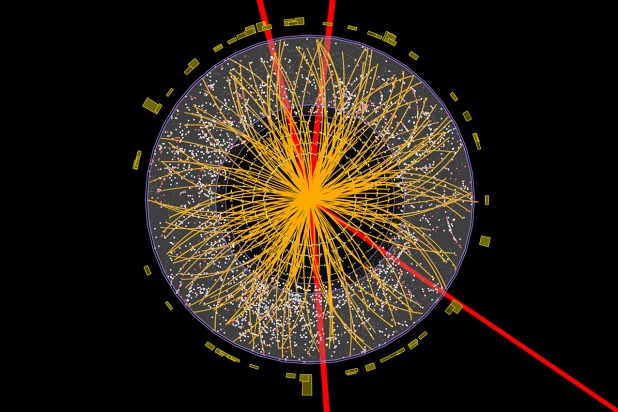
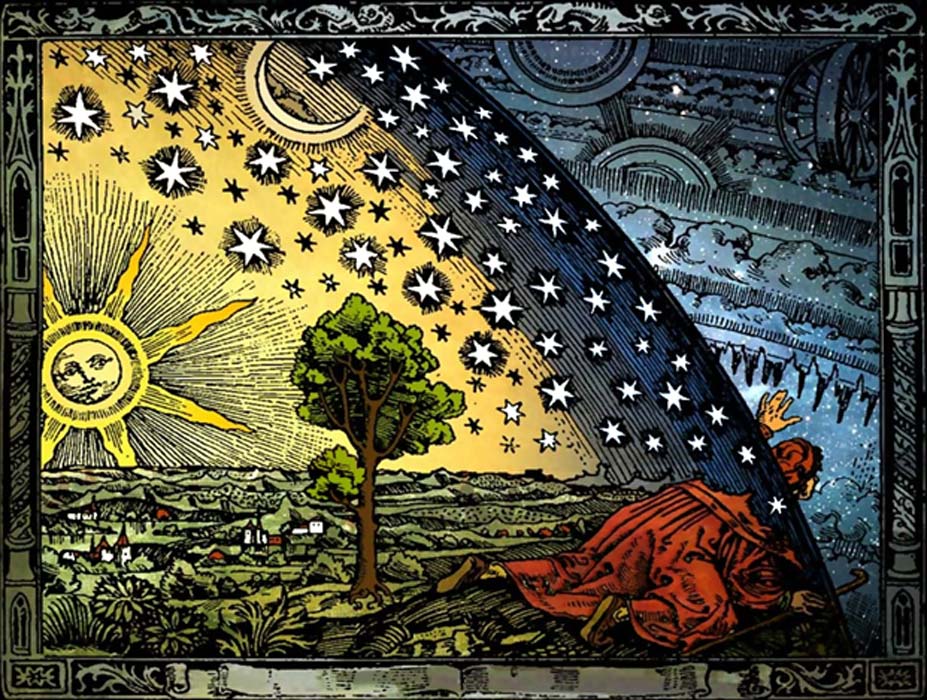

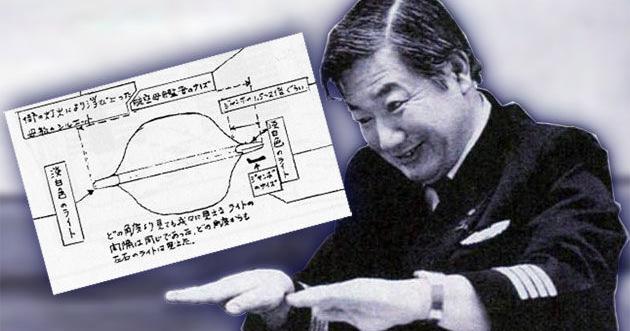
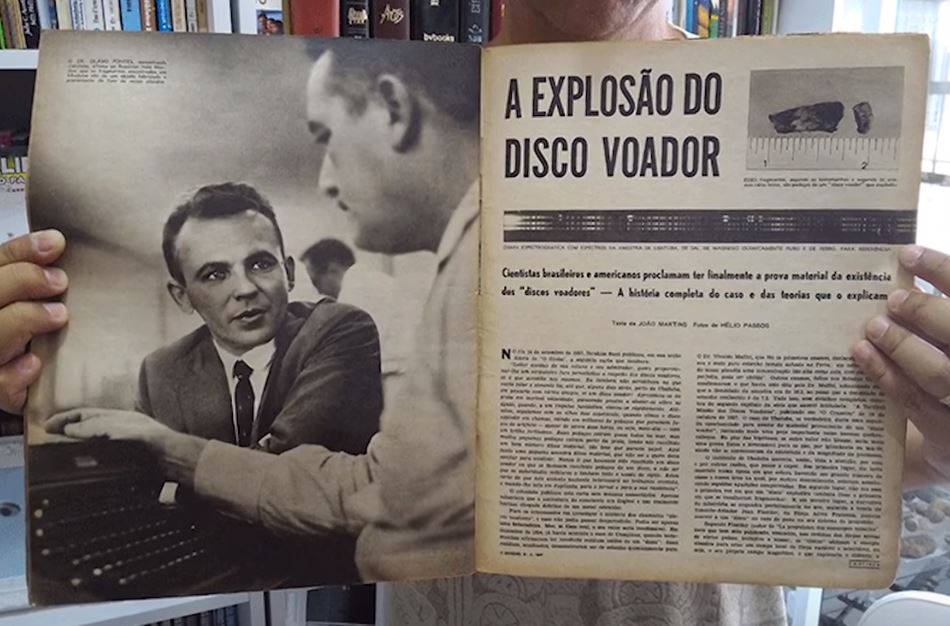
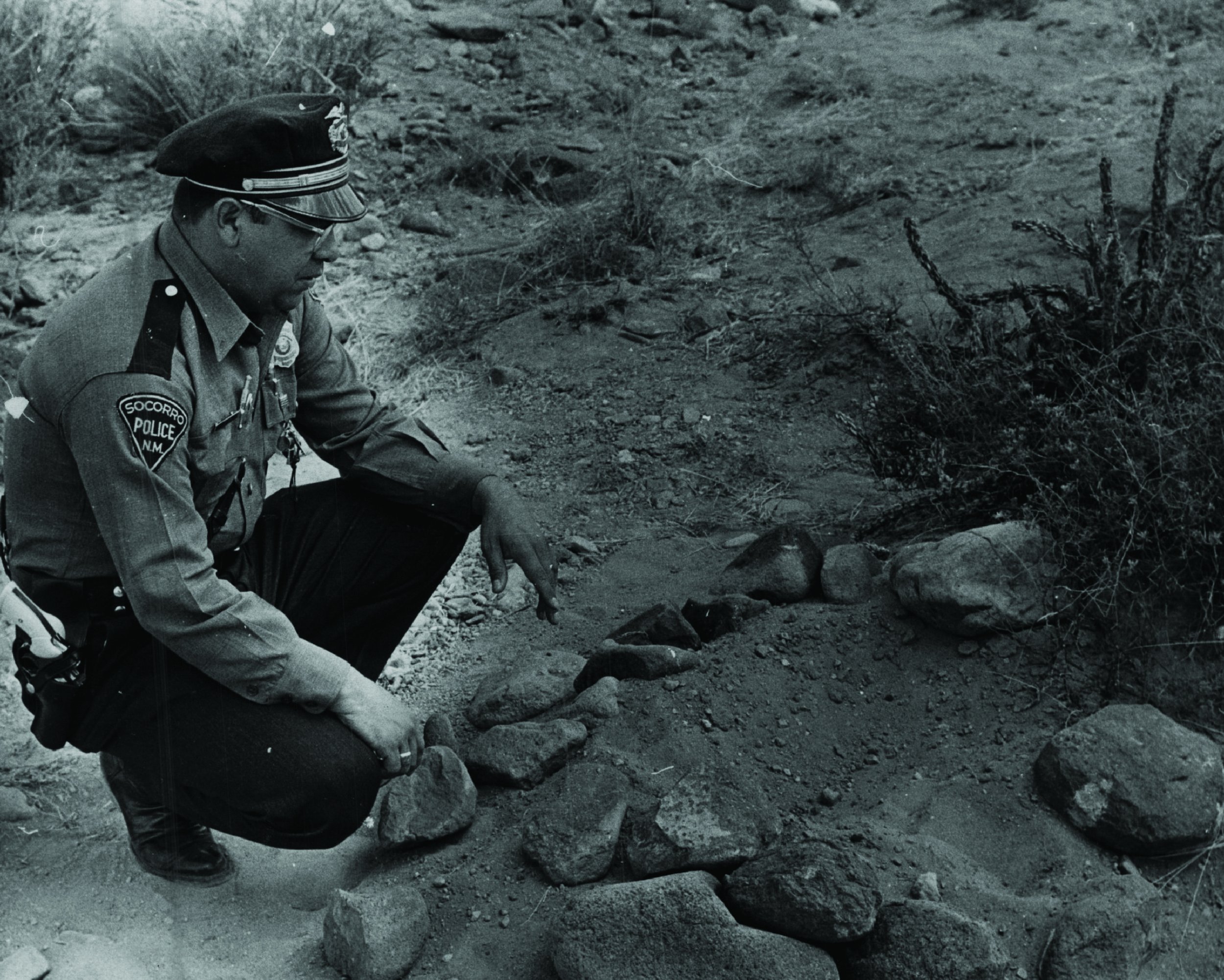



Thank you for wonderful work. "Coumbe perhaps manages in 162 pages to distill the very best of scientific 'ufology' from the previous seven decades, giving us essence not excitement or exaggeration, sobriety not unrestrained speculation." Here's a *must* read, for sure. Looking forward eagerly to your Part II !
ReplyDeleteGreat review of what looks like an important book. Thank you. As for the book's copyright being 2023: My publisher said they usually copyright a book for the following year to extend the life of the copyright!
ReplyDeleteInterestingly, the jumping-back-and-forth-manner of movement of UFOs can help is to guess what it can be. An object, which moves in oblique spiral in 4-dimensional space and passing through 3-dimensional plane will look like as if it is jumping several times before it reaches its new location. From this we can guess that UFOs are objects which exist in multidimensional space. This however, don't explains,where they come from or what they are doing here.
ReplyDelete